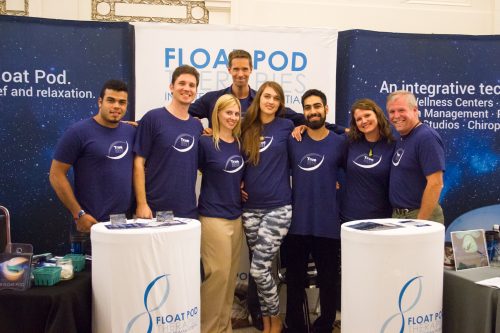The First Float Pod
The incredible effects of float pods were discovered and researched by a prolific scientist, John C. Lilly, in 1954. In the first iterations of the float pod, it was a giant tank filled with warm water, and participants wore diving suits and facemasks painted black to achieve total sensory deprivation. At the time, total-body submersion was used to study the effects of float therapy but later developed into simply floating on top of the water—a practice that is still done today.
Although the benefits of sensory deprivation were well-documented throughout his studies, Lilly knew that his setup would have to change to make floating and sensory deprivation available to the public. He partnered with Glenn and Lee Perry to create the first float pod.
Epsom salt was added to the water during this process to have a floating (versus entirely submerged) experience. The initial water tank was transformed into the light-proof float pod used in the industry today, made so that members can float effortlessly in the dark for a true sensory deprivation experience.
Commercialization of Float Pods
The first float tank center was opened in 1973 in California, and it spawned massive growth in the industry. People everywhere were experiencing the fantastic benefits of floating, and research on the subject exploded.
The Float Tank Association was founded in 1981 for further experimentation, and the term REST (Restricted Environmental Stimulation Therapy) was used for the first time in 1981.
However, the AIDS epidemic in the U.S. caused a drop in interest during the mid-80s through the 90s; the public was scared of sharing water facilities, which included float pods. Lilly’s death in 2001 revived public interest in floatation therapy, and the industry began its second boom.
James Rowe’s Discovery of the Float Pod
One of Rowe’s closest friends found comfort and mental relief from regularly floating. After a lunch meeting where he professed that his life, including suffering from addiction and PTSD, had been entirely changed by floating in a float pod, Rowe immediately flew out to Scottsdale, Arizona, to talk with the founders of True REST Float Spa and its franchising opportunities.
Now, a decade later, there are over 37 locations with hundreds of float pods for guests to enjoy the unique physical and mental benefits of floating.
The Modern Float Pod
At True REST, our float pods are in private rooms with showers available before and after a float session. The float pod is filled with 180 gallons of water and 1,000 pounds of Epsom salt, approximately 10 inches of solution perfect for effortless floating.
We have control buttons inside the tank that offers light and music inside the pod; it’s also easy to open or close the pod door. However, we do recommend floating in the dark with total silence for a true sensory deprivation experience. The best thing about floating at True REST is that every session is customizable to fit our guest’s needs.
Floating is proven to reduce stress, anxiety and depression and can also help relieve physical pain.
If you are interested in a more comprehensive guide to float pods and floatation therapy, please visit https://www.truerest.com/float-therapy/history-of-flotation for more information. To find the nearest location, visit https://www.truerest.com/locations/. Also, learn more about float therapy’s benefits at www.truerest.com/float-therapy/#benefits.
The post The Evolution of Float Pods appeared first on True REST Float Spa.





Leave a Reply
You must be logged in to post a comment.